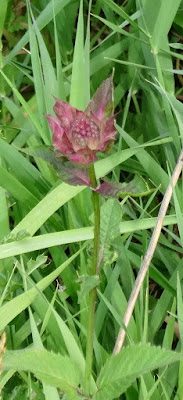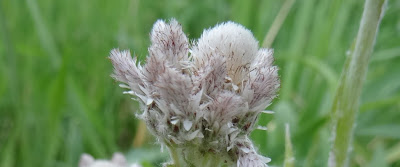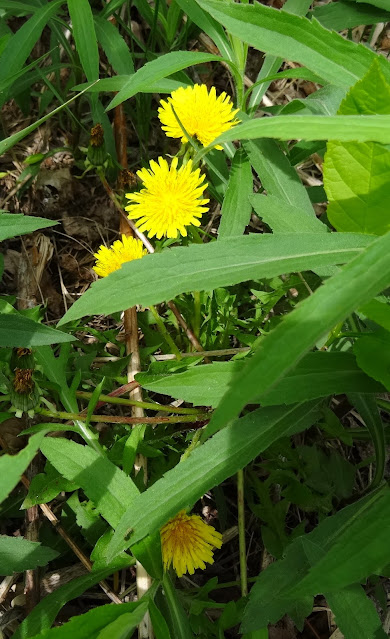7/04/2023
smooth oxeye
7/03/2023
bergamot
6/05/2023
prairie smoke gone to seed
We added Prairie Smoke Geum triflorum to the riparian area around the pond last year. They survived the winter, and bloomed mid-May.
Now each flower has transformed into clusters of feathery, wispy plumes that eventually will spread seeds as they wave in the breeze.
6/03/2023
blue flag
Northern Blue Flag Iris versicolor has a deep blue to purple flower. It is also called Harlequin Blueflag.
It grows on lake shores, swamps, pond edges, and wet meadows.
Blue Flag irises occur throughout the USA, in several varieties. Some plants are located on the south shore of the pond, and are blooming now.
5/29/2023
ox-eye daisy - invasive
Ox-eye Daisy Leuceanthemum vulgare is a perennial herbaceous species with a creeping root system.
This daisy is not native to Minnesota, but imported as an pretty ornamental flower.
It turned out to be an aggressive invasive species. Once established, it can spread rapidly by means of roots and seeds, and block sunshine for other native wildflowers.
5/17/2023
prairie smoke
9/18/2022
9/06/2022
vivipary = seed heads sprouting
This wildflower was finished blooming and was forming seeds. But its seed head sprouted green leaves! Fascinated, I looked closer. Some of new seeds were actually germinating and sprouting while still in the seed head. Usually, they wait until they are in the perfect place (soil, moisture, temperature, sunlight) to begin new growth. Sometimes you see this while seeds are still inside the fruit, like a tomato or green pepper. In plants, it is called vivipary (Latin for 'live birth') and involves seeds germinating before their determined time. I first learned about this a few years ago when my grandson sent me a photo of a sunflower seed head that was doing the same thing.
8/28/2022
senna
8/19/2022
8/15/2022
August wildflowers
7/07/2022
culver's root
6/12/2022
smooth penstemon
Foxglove Beardtongue, Penstemon digitalis (also called Smooth Penstemon) has white flowers that bloom for a month or longer.
The tubular flowers attract long-tongued bees such as bumblebees and mason bees, as well as hummingbirds. This is one of the plants we are trying to encourage in the riparian area around the pond.
Good for pollinators!
6/11/2022
iris
6/03/2022
6/01/2022
pussytoes 6-1
5/21/2022
early purple ivy blooms
creeping charlie, gill-over-the-ground, alehoof,
tunhoof, catsfoot, field balm, or run-away-robin.
I admire the shape and texture of the leaves, and
used them in a botanical design project.
5/12/2022
nectar and pollen
8/19/2021
strong stem
Ironweed is one of a few host plants for American Painted Lady butterfly. ‘Host plants’ are those that the butterfly lives on, lays eggs on, and their larvae are sustained by.
See also the post on 8-21-2020





























